Home of hundreds of ethnic groups with a different culture, Indonesia has many rituals and traditions. Come visit Indonesia and experience these unique ones that will fascinate you.
1. Debus Martial Art
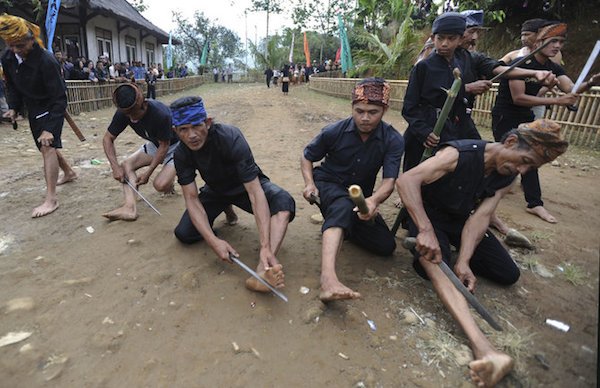
Debus is the ancient martial art and culture of Banten. The province of Banten which was once part of the vast West Java province was formed in the year 2000 and is today the youngest province on the island of Java. However, its people are long known in history to have their own distinct culture. One of its cultural traits that are definitely most spectacular and breathtaking is the ancient art of Debus. Debus is the traditional martial art unique to Banten that is imbued with supernatural powers. Debus is a fusion of skills that require super-human inner strength, martial art but also music and dance. This extraordinary art is said to have been developed in the 16th century during the reign of the first sultan of Banten, Sultan Maulana Hasanudin (1532-1570).
2. Kerik Gigi
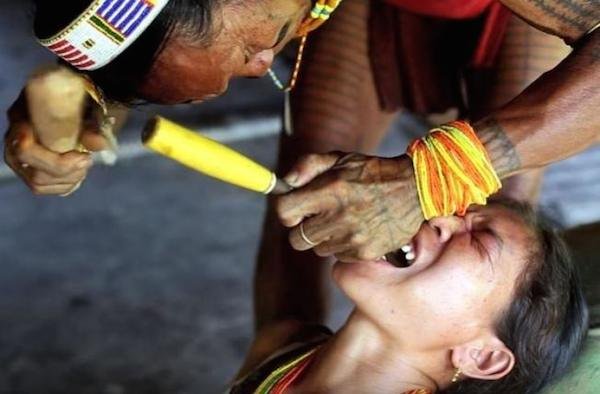
Kerik Gigi is a tradition of scraping or sharpening teeth in Mentawai Tribe women. This hurtful yet unique tradition is a way for Mentawai women to look beautiful and also as a marker of a woman’s maturity. To carry out this tradition, Mentawai women have to endure pain long enough when 23 of their teeth are scraped or sharpened. In the process, Mentawai women are not given anesthesia and use tools in the form of iron or wood that sharpened edges.
3. Pasola
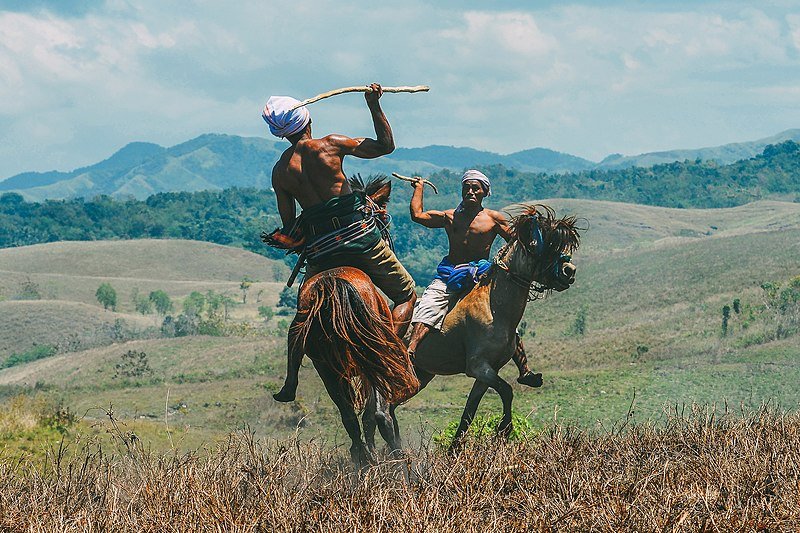
Photo: Fakhri Anindita
Pasola is a mounted spear-fighting competition from western Sumba, Indonesia. It is played by throwing wooden spears at the opponent while riding a horse to celebrate the rice-planting season. Originally the participants rode horses and threw spears at each other in an attempt to spill blood to the ground, as a way of thanking the ancestors for a successful harvest and ensuring another prosperous rice harvest. The ritual changed over time into more of a mock battle. The spear tips are now blunt and their metal tips removed. Whereas it was once considered an honor to die during Pasola, only accidental deaths occasionally occur today. The human and horse blood which used to drench the field is now solely from sacrificed pigs, dogs, and chickens. Armed police are kept on guard to prevent fights from breaking out. Pasola is always held for four weeks in February and March.
4. Tau Tau in Tana Toraja, Sulawesi
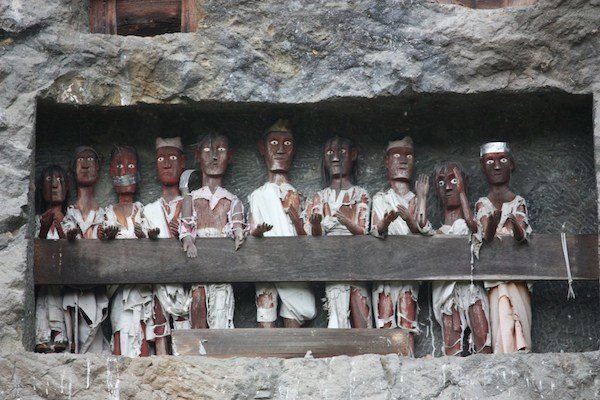
Tau Tau is also known as effigies of the dead in Tana Toraja, Sulawesi. In the Torajan culture, Tau-tau is an effigy that represents the person who has passed away. Carved from wood or bamboo, Tau-tau statues are usually found near where the body of the deceased has been laid to rest. Believed to have originated in the 19th century, these effigies were once produced only for aristocrats and the wealthy to reflect status and opulence. As a representation of the deceased, Tau-tau are also regarded as guardians of the tomb as well as protectors of the living. In so doing, they preserve the link between the dead and the living. Although they are carved based on the physical form of the deceased, Tau-tau represent their spirits that are believed to continue to exist in the afterlife (a realm known as Poyo in the Torajan Culture).
5. Mesuryak
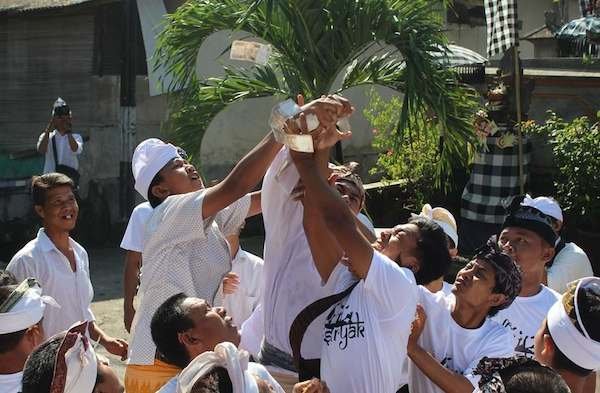
Mesuryak is a ritual carried out from generation to generation by residents of Bongan Village, Tabanan Regency, Bali to support Kuningan Day. The Mesuryak ceremony is held to coincide with the Kuningan Day (10 days after Galungan) every 6 months. Mesuryak will provide supplies in the form of rice and money to the ancestors who will return Suarga Loka (afterlife). Before the ceremony began, all residents prayed at the temple in the local village. After that, each family member provides provisions to the ancestors in the form of money in Rupiah denominations which are then thrown and taken by residents. The money thrown for the ancestors was symbolized in return for gratitude to Ida Sang Hyang Widi.
6. Kebo-Keboan in Banyuwangi
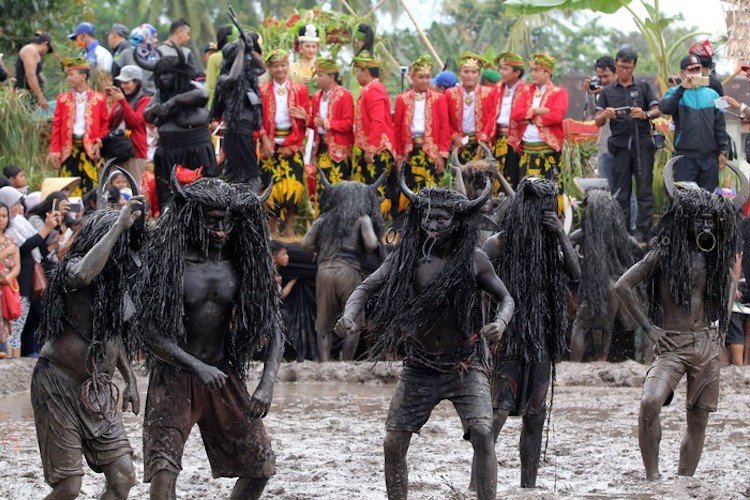
Kebo-Keboan is one of the traditional ceremonies in which farmers transform themselves into buffaloes in Banyuwangi. Kebo-Keboan is usually done at the beginning of the month of Suro, the Javanese calendar. The purpose of this traditional ceremony is to thank God Almighty for abundant harvests. As well as a prayer that the process of planting seeds will also produce an abundant harvest in the following year.
7. Ma’nene from North Toraja Regency
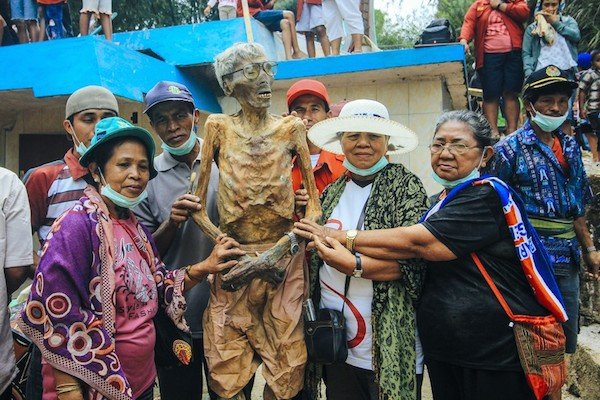
Ma’nene rituals are held every three years in a number of locations in the North Toraja Regency, South Sulawesi. Hundreds of bodies that have been buried in the Patane or a typical coffin of the Toraja will be reopened. Each body that was stored was preserved so that when opened it was still intact. Before opening the coffin and lifting the corpse, the traditional elders, called Ne ‘Tomina Lumba, will recite prayers in the ancient Toraja language and ask for permission from the ancestors so that the community will be blessed every planting season until harvest. The bodies are then cleaned using a brush and worn with new fabric or clothing. After that, the body will be put back in Patane. The series of Ma’nene events was closed by gathering family members at the Tongkonan traditional house to pray together.
8. Fahombo from Nias Tribe
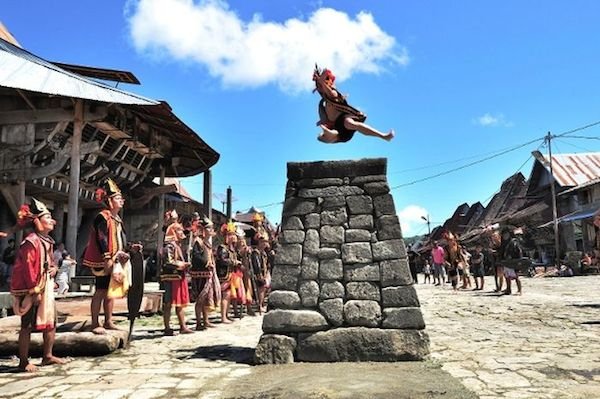
Fahombo, Hombo Batu, or in the Indonesian language “Jump Stone” is a traditional sport of the Nias tribe which is also a ritual of male maturity. Because it is unique, Fahombo is also a traditional tourist attraction that is loved by travelers from all over the world. They must jump over the arrangement of stone buildings as high as 2 meters with a thickness of 40 cm or more.



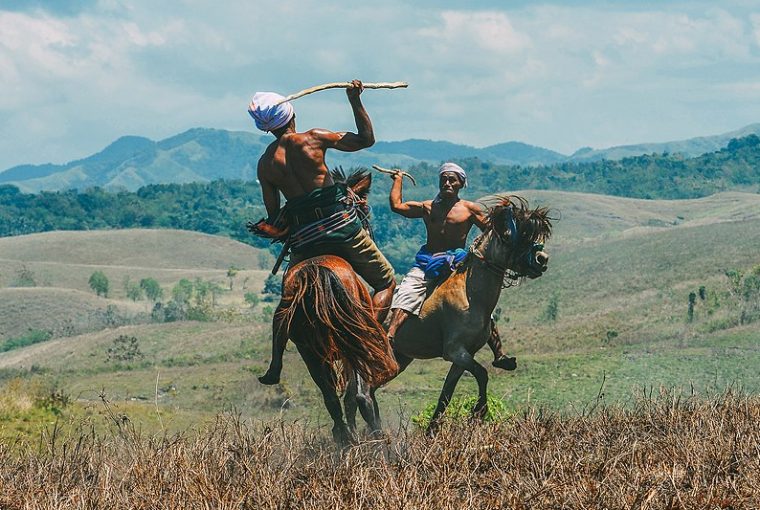
 Chyntia .DW
Chyntia .DW
 Mar 17, 2023
Mar 17, 2023